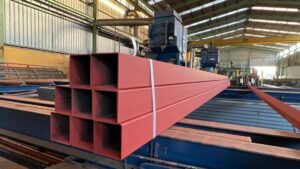Russia’s steel demand may slump 30%, or 13 million mt, year on year in 2022, Russian steelmakers association Russkaya Stal wrote in a letter addressed to the First Deputy Prime Minister Andrey Belousov.“
Ferrous metals producers in Russia are facing a significant decrease in domestic demand for their products, which, among other things, is owed to production stoppages within the automotive industry — eight of 14 Russian car plants have been idled, and the cumulative decline in car production may reach 50% this year,” the letter, dated March 28 and seen by S&P Global Commodity Insights, said.
Russkaya Stal spokesperson declined to comment on the association’s correspondence with the government.
Major Russian major steelmakers had forecast 2022 domestic steel demand to rise 2%-3% prior to Russia’s military invasion of Ukraine, driven by a higher uptake in the oil and gas and machinery industries.
The letter sought to prevent mooted hikes in railway freight tariffs over the coming months. State-owned Russian railway network operator Russian Railways was considering a 11.7% increase in tariffs in the second quarter, 18% in the third, and 20% in the fourth, according to the letter.
“There has been no such announcement [of the tariff hikes],” a spokesperson for Russian Railways said. “It is our working correspondence, which we do not comment on.”
Seaborne transportation costs have already surged for Russian consignors because of container shortages, fewer vessels transporting Russian goods on board, restrictions on handling Russian cargo at European ports, and ruble’s sharp devaluation due to sanctions on Russian banks and corporations, Moscow investment company Aton said in a note March 29.
The foreseen loss in domestic steel demand would come on top of the 10 million mt of steel volumes that Russia can no longer export to traditional markets because of the sanctions and bans on its exports of certain materials, such as finished steel products, according to Aton.
Europe’s refusal to buy Russian rolled steel is forcing Russian steel mills to reroute supplies to China and Asia, but the move is unlikely to provide material economic benefits.
The potential for Russian steel companies to displace some of the Chinese imports was possibly limited, as Russia’s 10 million mt/year steel exports to “unfriendly countries” equated to 70% of Chinese steel imports by gross volume, Aton said.
“China is a commodity giant accounting for 50% of the global consumption of steels and other metals, bulks, and coal, but it is also a huge producer, which makes its net imports look relatively small,” said Aton.
Hot-rolled coil spot prices in China were already 50% lower than in Europe and over 20% lower than FOB Black Sea, suggesting that Russian steel companies may have to offer discounts to obtain access to the Chinese market, according to Aton.
A distance of 5,360 km between Moscow and a destination in China, compared with 1,860 km to Germany would result in higher transportation costs associated with shifting volumes from Europe to Asia. Rerouting volumes would also further strain a chronically overburdened Russian Railways’ eastern network, made up of the Baikal-Amur and Trans-Siberian main lines.
The alternative Northern Sea route from St. Petersburg to Vladivostok, considered one of the gateways to Asia, was relatively shorter at 14,000 km than the widely used 23,000 km route via the Suez Canal. The Northern Sea route was, however, mostly used to transport specific goods from Nornickel and Yamal LNG and extending it to include other commodities would require construction of onshore infrastructure and expansion of ice-breaking shipping fleet, said Aton.
— Ekaterina Bouckley






